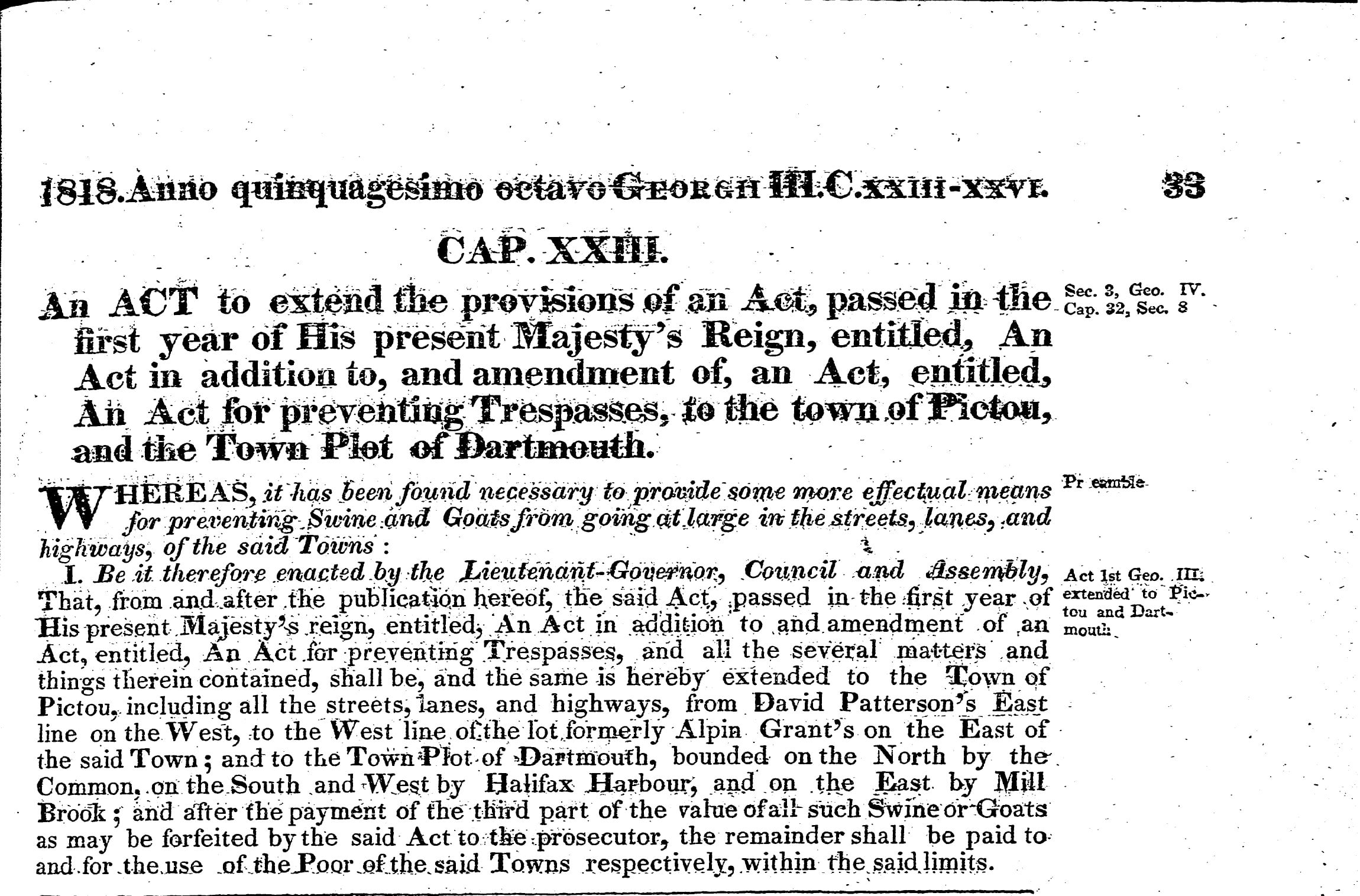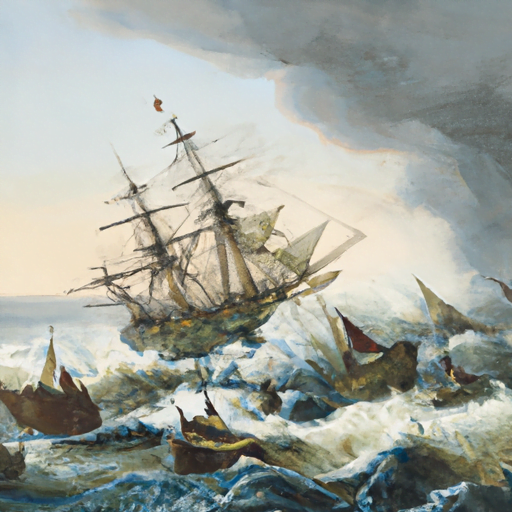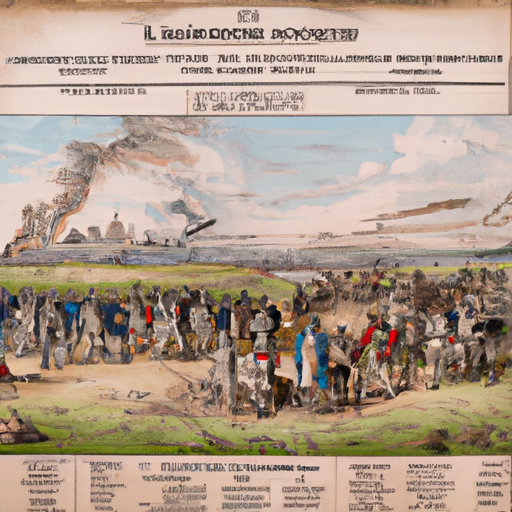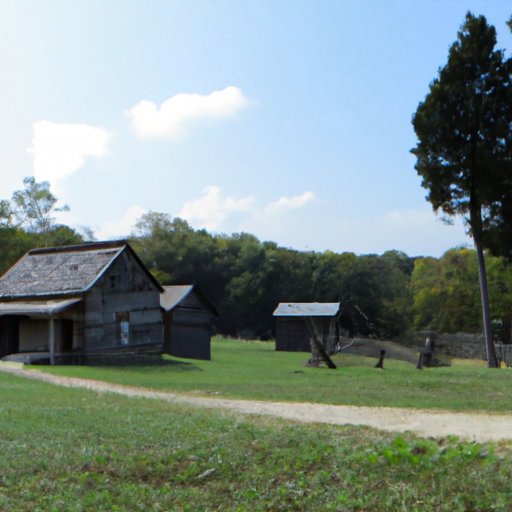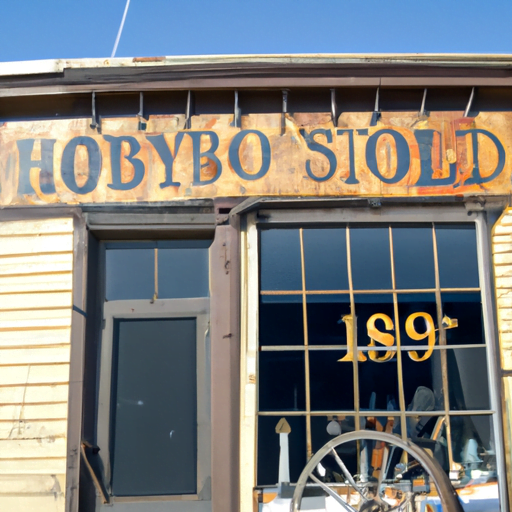During the summer of 1816, the construction of the new team-boat, or horse-boat, continued in progress. The machinery necessary to revolve the propeller seems to have been imported from New York firms experienced in rigging similar such boats. The launching took place on Monday, September 30, and the place was somewhere in Dartmouth Cove. The only previous record of a ship being built in Dartmouth was that of the “Maid of the Mill”, launched in August 1801.
Among the gay crowd at high-tide that September day, there were evidently many brightly dressed ladies mingled with their companions along the shore, and others who came over from Halifax in small boating-parties. Perhaps a military band also enlivened the air.
One enthusiastic spectator has left us his impression of the scene in a letter to the “Acadian Recorder” the following week:
Sir,—I have been present at many Launches but never witnessed one, take it “all in all”, with so much pleasure as that on Monday last. Dartmouth Cove is in itself picturesque, the assemblage of beauty on the shore, the boats plying in the Cwe and the novelty of the team-boat, formed a scene worthy of the pencil of the first masters in painting; the public spirit and disinterestedness of the gentlemen who have so promptly come forward—the pen of the poet—that both may be found is the earnest wish of … K. I. „
The 25 shareholders of the Company included the enterprising Samuel Cunard. The President was Hon. H. H. Cogswell and the Secretary was Charles R. Fairbanks, a rising young barrister.
The first trip of the team-boat was made on the 8th of November. Dr. Akins’ History says that it was considered an immense improvement, and the additional accommodation for cattle, carriages and horses was a great boon to country people traveling to market at Halifax.
This is the 70-foot ferry “Sherbrooke” launched at Dartmouth in 1816. Inside the housing on the deck, a team of eight horses harnessed to iron stanchions traveled around a cogwheel which turned a crank. The crank then moved the single propeller located under the middle of the boat. As auxiliary power, sails were hoisted whenever the wind was favorable. This type of ferry was common at the time.
The road from Dartmouth to Bedford apparently was made available for vehicular traffic about 1816. Up to that time there existed only a trail or pathway over which cattle evidently were driven around the Basin to be sold in the market at Halifax by farmers from the eastern sections and Tufts’ Cove area.
This is inferred from a request signed by 33 rural residents presented to the House of Assembly that spring asking for financial assistance. The petition stated that the footpath, which had been brought into the shape of a road by small sums previously granted, was found to be very useful. In consequence they had subscribed irnong themselves the sum of £124 for the further progress of the road during the ensuing summer.
The Legislature responded favorably to the request, and agreed- to an appropriation of £130 for this work.
The winter of 1816-1817 was exceptionally cold. Teams crossed over Bedford Basin all winter and the Eastern Passage was closed in with ice until April. Much distress prevailed among the laboring classes. Inmates at the Halifax Poor House numbered nearly 200. Potatoes were scarce, and in some parts of the Province flour was not available at any price.
